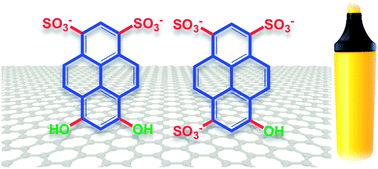Nanoscale insight into the exfoliation mechanism of graphene with organic dyes: effect of charge, dipole and molecular structure†
Abstract
We study the mechanism of surface

* Corresponding authors
a
ISOF – National Research Council, Bologna, Italy
E-mail:
palermo@isof.cnr.it
b School of Chemistry and Photon Science Institute, Manchester University, UK
c Laboratory for Chemistry of Novel Materials, University of Mons, Mons, Belgium
d IMM – National Research Council, Bologna, Italy
e ISIS & icFRC, Université de Strasbourg & CNRS, Strasbourg, France
We study the mechanism of surface

 Please wait while we load your content...
Something went wrong. Try again?
Please wait while we load your content...
Something went wrong. Try again?
A. Schlierf, H. Yang, E. Gebremedhn, E. Treossi, L. Ortolani, L. Chen, A. Minoia, V. Morandi, P. Samorì, C. Casiraghi, D. Beljonne and V. Palermo, Nanoscale, 2013, 5, 4205 DOI: 10.1039/C3NR00258F
To request permission to reproduce material from this article, please go to the Copyright Clearance Center request page.
If you are an author contributing to an RSC publication, you do not need to request permission provided correct acknowledgement is given.
If you are the author of this article, you do not need to request permission to reproduce figures and diagrams provided correct acknowledgement is given. If you want to reproduce the whole article in a third-party publication (excluding your thesis/dissertation for which permission is not required) please go to the Copyright Clearance Center request page.
Read more about how to correctly acknowledge RSC content.
 Fetching data from CrossRef.
Fetching data from CrossRef.
This may take some time to load.
Loading related content
